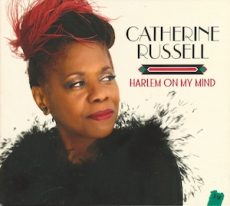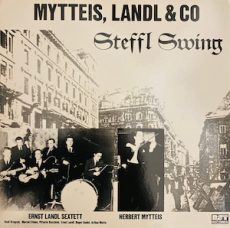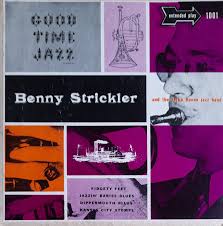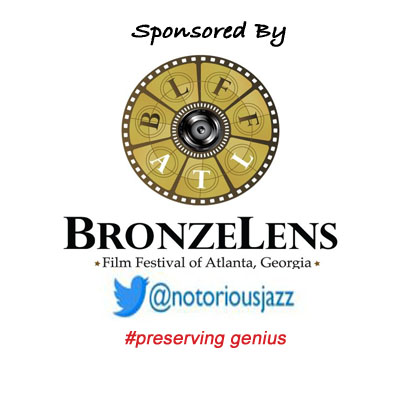
Daily Dose Of Jazz…
Fred Staton was born on Valentine’s Day, February 14, 1915 in Pittsburgh, Pennsylvania. His musical life began with his mother’s player piano and 78 records of Duke Ellington and Fletcher Henderson. He began singing in his church’s gospel choir, but got introduced to playing jazz when the group’s sponsor brought in a full band’s worth of equipment, complete with charts of popular music. He first picked up the drums but having to pack up his kit left few women to flirt with as his bandmates left after the gig. This and the influence of a Johnny Hodges cut on an Ellington big band record inspired him to choose the saxophone.
He played in the first ensemble Art Blakey ever formed, alongside pianist Erroll Garner. The lack of opportunity and venues for a young black man in segregated Pittsburgh led Staton to leave the Steel City and find his fortune gigging on the East Coast. He fell in with Horace Silver and watched fellow Westinghouse High School graduates Billy Strayhorn and Ahmad Jamal pen iconic compositions.
Staton went on to become a veteran member of the Harlem Blues & Jazz Band, and toured Europe, Russia and the United States to much acclaim. He has received numerous honors and awards, and was a lifetime member and supporter of WBGO Radio. Tenor saxophonist Fred Staton continued to play jazz until his death at 102 years of age on October 25, 2017.
More Posts: history,instrumental,jazz,music,saxophone

Daily Dose Of Jazz…
Ernst “Nesti” Landl was born February 12, 1914 in Vienna, Austria. He studied at the New Vienna Conservatory in the 1930s and soon made a name for himself on the Viennese music scene.
In Vienna he accompanied the singer Adelaide Hall and was soon active as a musician in North Africa and Portugal. From 1943 he played in the Steffl Diele with Italian singer and guitarist Vittorio Ducchini, violinist Herbert Mytteis and French drummer Arthur Motta. Due to the audience response, recordings were made for Odeon, but due to the ” jazz focus ” there were initially almost no releases.
After the defeat of National Socialism he played in the Vienna Dance Orchestra and also founded the Hot Club Vienna as a studio band to record jazz songs for Elite Special with musicians such as Hans Koller and Viktor Plasil. Until 1958 Landl performed in Vienna mainly as a bar pianist . He then moved to Stockholm, Sweden where he worked until his death.
Pianist, bassist and drummer Ernst Landl died on December 4, 1983 in Stockholm.
More Posts: bandleader,bass,drums,history,instrumental,jazz,music,piano

Daily Dose Of Jazz…
Teddy Napoleon was born January 23, 1914 in New York City, New York. His first professional engagement was with Lee Castle in 1933, then played with Tommy Tompkins for several years before working as a freelance musician in New York.
In the 1940s he played in several big bands, including Johnny Messner and Bob Chester, before signing up with Gene Krupa in 1944. He worked with Krupa intermittently for the next fourteen years including on many of his big band releases in the 1940s, and in his trio settings with Charlie Ventura.
He also spent time working with Flip Phillips, Bill Harris, and Eddie Shu. Teddy moved to Florida in 1959 and led his own trio there, though he never recorded as a leader, however he did record a duo album with his younger brother Marty, also a pianist.
Swing jazz pianist Teddy Napoleon, who was the nephew of trumpeter Phil Napoleon, eventually returned north and died on July 5, 1964 in Elmhurst, New York.
More Posts: history,instrumental,jazz,music,piano

Daily Dose Of Jazz…
Werner Dies was born on January 15, 1928 in Frankfurt, Germany. An autodidact on guitar and saxophone, he studied clarinet and composition starting in 1947. From 1947 to 1955 he played guitar in the dance band of Willy Berking, and was a member of the bands Hotclub Combo and Two Beat Stompers.
He led his own ensemble, went on a tour of Yugoslavia in 1955 and from 1955 to 1965 he was a member of Hazy Osterwald’s sextet, and also worked as a session musician and arranger. He toured with Joe Turner and, in 1968, Charly Antolini.
He had a hit in Germany in 1954 with Schuster bleib bei deinen Leisten (The Little Shoemaker) that spent eight weeks at #1 on the German hit parade starting in October 1954. He later worked for Howard Carpendale, Adam & Eve, Graham Bonney, and other singers, and produced easy listening music with his own ensemble, the Werner Dies Sax Band.
He wrote a treatise on clarinet improvisation that was published in 1967. He produced the group Bläck Fööss from 1973 to 2003. Tenor saxophonist, clarinetist, guitarist, composer, and arranger Werner Dies died on February 5, 2003.
More Posts: arranger,bandleader,clarinet,composer,guitar,history,instrumental,jazz,music,saxophone

Daily Dose Of Jazz…
Benny Strickler was born in Fayetteville, Arkansas on January 9, 1917 and took music lessons as a pre-teen and later played in a town band. After graduating high school, he became a professional musician and played with several territory bands in Arkansas and the Southwest. In 1935, with wife Frances in tow, he joined the migration from the Dust Bowl to the Golden State.
Benny established himself as one of the top trumpeters in Los Angeles, California. He played with bands led by Ben Pollack, Joe Venuti, Vido Musso and boxing champ/string bassist Max Baer. He even got an invitation from Artie Shaw, which he turned down.
He recorded his first recordings in 1937 with the Choir of Brass led by vocalist/pianist Seger Ellis. In 1941 he went to work with Bob Wills’ Texas Playboys and along with Danny Alguire and Alex Brashear and reedman Woodie Woods they shaped the swinging sound of the band between 1941-42. World War II broke them up with some enlisting, others drafted, however, Benny was exempted due to tuberculosis.
His illness worsened and was ultimately forced to quit playing. He returned to Arkansas, checking into a Booneville sanitarium. Trumpeter Benny Strickler, who played with the top Western Swing and Traditional bands, played sporadically until he succumbed to the tuberulosis and died on December 8, 1946.
More Posts: history,instrumental,jazz,music,trumpet



